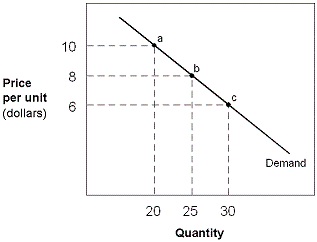Suppose the government of a small open economy reduces its spending, so that national saving increases. The result is
A) an increase in the real interest rate.
B) an increase in net exports.
C) a decrease in the real interest rate.
D) an increase in investment.
B
You might also like to view...
With a natural monopoly,
A) no regulation is necessary because it is a natural monopoly. B) regulation takes the form of forcing competition from new firms. C) regulation takes the form of forcing the company out of business. D) regulation can take the form of average cost pricing to allow coverage of costs. E) regulation takes the form of breaking the company into several competing firms.
A perfectly competitive firm sells its output for $100 per unit and marginal cost is $100 per unit. To maximize short-run profit, the firm should:
a. increase output. b. decrease output. c. maintain its current output. d. shut down.
Exhibit 5-1 Demand curve
?

A. buy twice as much of the product in response to a 10 percent decrease in prie. B. require a 2 percent drop in price to increase their purchases by 1 percent. C. buy 2 percent more of the product in response to a 1 percent decrease in price. D. buy twice as much of the product in response to a 1 percent decrease in price.
Surplus refers to:
A. the difference between the willingness to sell and the actual price accepted. B. the difference between the willingness to pay and the actual price paid. C. the difference between the price at which a buyer or seller would be willing to trade and the actual price. D. All of these are true.